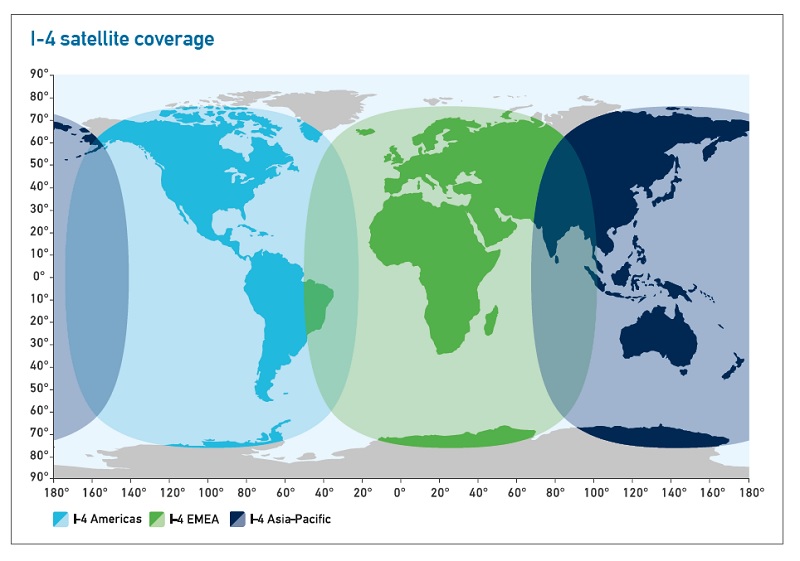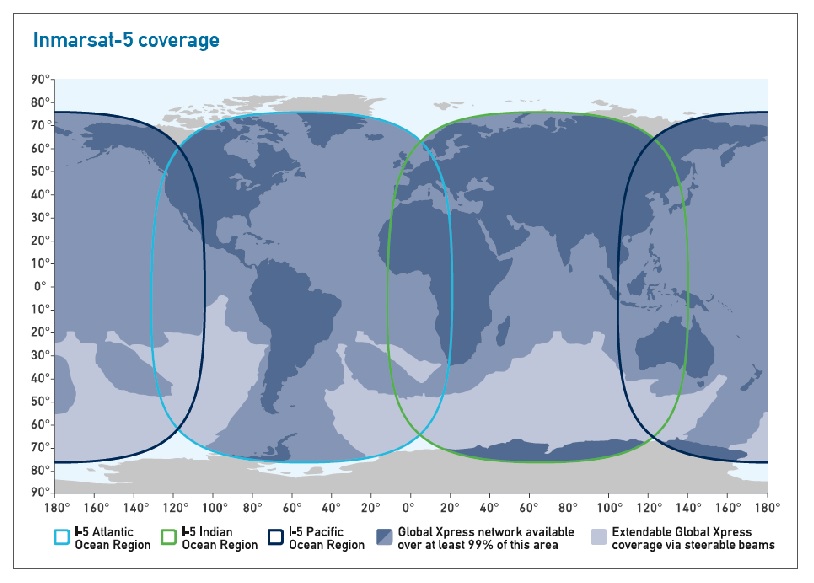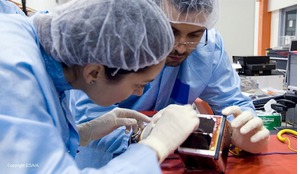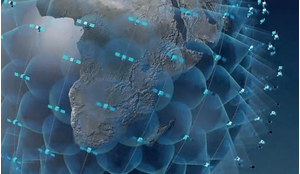The extraordinary disappearance of Malaysian Airlines Flight MH370 in March 2014 prompted many to ask how commercial flights were tracked. Even though no trace of the aircraft has been found, information provided by Inmarsat did, at least, show that the aeroplane had turned 180 degrees away from its planned flight path from Kuala Lumpur to Beijing and for reasons we may never know headed south.
Inmarsat is a long-standing provider of satellite communication (satcom) safety services supporting aircraft on a worldwide basis. The company has over 30 years’ experience in designing, launching and operating satellitebased communications networks. With a fleet of 11 owned and operated geostationary satellites, Inmarsat provides a comprehensive range of global mobile satcom services, including voice and broadband data services supporting safety communications.
Inmarsat currently supports such services to aircraft that are equipped with its Classic Aero avionics – the current standard for oceanic safety satcoms for aircraft operations. The Classic Aero service supports air traffic control safety services, as well as airline operational communications services. It is made available over the Inmarsat-3 and Inmarsat-4 satellite constellations through Inmarsat’s Classic Aero distribution partners, ARINC and SITA.
Classic Aero is used by over 11,000 aircraft worldwide, supporting future air navigation system (FANS) operations. A range of satcom terminals are available to suit a wide range of aircraft types. The satcom voice service to the aircraft cockpit is generally used to complement air traffic control operations between the pilot and the radio operator on the ground, particularly when no HF or VHF radio coverage is available. It can also be used to enable day-today airline operational voice communications, and to provide assistance to aircrew in the event of on-board emergencies.
The data services are provided over the aircraft communications addressing and reporting system (ACARS) character-based data protocol. ACARS supports the FANS message data set, which includes the automatic dependent surveillance-contract (ADS-C) aircraft position reporting function, and the controller-pilot data link communication (CPDLC) application.
Satcom data link services enhance air traffic management surveillance and intervention capabilities and are therefore seen by the International Civil Aviation Organization (ICAO) as instrumental in meeting the target level of safety in oceanic airspace. The FANS ADS-C application provides air traffic controllers with an active surveillance picture of their airspace, thereby enhancing safety in all FANS-capable airspace – in particular the oceanic environment that constitutes the real challenge for safety tracking of aircraft.
Since FANS ADS-C provides active aircraft position tracking, with alerts to controllers for any aircraft deviating from its planned trajectory or for any missed reports, there is no requirement for very high position-reporting rates as may be required for other surveillance systems. As a result, the use of FANS ADS-C greatly facilitates search and rescue operations and the location of an aircraft following an incident in oceanic airspace.
Satcom data link services enhance air traffic management surveillance and intervention capabilities and are instrumental in meeting the target level of safety in oceanic airspace
Another benefit of FANS is the CPDLC data link application, which enables pilots to make requests, such as alternative altitudes or routes to avoid bad weather. It also permits controller intervention, at any time, in the event that aircraft begin to stray from the track shown in their flight plan.
Looking to the future, more tracking services will become available to the aviation community through the forthcoming SwiftBroadband Safety, which will provide the same FANS service as Classic Aero, together with new, additional position-reporting services. In addition, the improved spectral efficiency of SwiftBroadband over Classic Aero allows Inmarsat to offer safety data services at a lower cost compared to Classic Aero, as well as providing a satcom terminal option for narrowbody and business jet aircraft.

 Coverage provided by the Inmarsat-4 constellation of satellites. Below: the projected coverage for the Inmarsat-5 network. At present, the first satellite, which serves Europe, the Middle East, Africa and Asia, is operational
Coverage provided by the Inmarsat-4 constellation of satellites. Below: the projected coverage for the Inmarsat-5 network. At present, the first satellite, which serves Europe, the Middle East, Africa and Asia, is operational
SwiftBroadband Safety additionally supports a separate fully automated function that provides regular transmission of position-reporting data from all equipped aircraft. The SwiftBroadband Safety position-reporting service is implemented within the ACARS infrastructure and provides position reports containing latitude, longitude, altitude, true heading and ground speed, at a maximum interval that is configurable from the ground. Inmarsat will also be able to make the aircraft position data available for search and rescue in the case of an emergency.
The position reporting concept has the potential to be extended to support real-time flight data recorder (FDR) and cockpit voice recorder (CVR) data download, with FDR data download via the safety-prioritised IP link.
SwiftBroadband Safety is currently estimated to become commercially available towards the end of 2015 with trials commencing in 2014. An extended period of FANS evaluation flight trials is planned to begin in the third quarter of 2014.
Re-evaluating procedures
The disappearance of Flight MH370 has prompted a re-evaluation of safety procedures, just as the loss of Air France 447 did in June 2009. After that tragedy, the proportion of commercial transport aircraft flying over oceans that are FANS-equipped was increased from below 50 per cent to nearly 80 per cent.
All new wide-body Boeing and Airbus aircraft are now fitted with FANS-capable avionics. This is clearly a significant increase, though more needs to be done to exploit further the potential of FANS. The industry has been looking for a ‘one-size-fits-all’ solution. However, the nature of aviation, with vastly differing routes across the world and many different aircraft types, means the technology for ‘one-size-fits-all’ is unlikely to emerge for many years.
Satellite technology can be used for a range of things. These include routine air traffic control as well as proactive air traffic management, helping to reduce separation over oceanic airspace, hence saving fuel and CO2 emissions. It can also be used to provide a secure high bandwidth communications link to the cockpit for pilots to use, for example to connect their electronic flight bag. Black box data can be downlinked to the ground in real time, and the satellite connection can be used for emergency ‘distress’ communications when an aircraft encounters an emergency situation. It can also be used for passenger communications: IFE, TV, Wi-Fi and GSM.
In the future, satellite connectivity will become a supplemental means of communication, even over continental airspace, combined with ground-based communication means. Inmarsat’s leadership of the Iris Precursor project is extending the SwiftBroadband service to support air traffic management applications at the same performance levels as VHF, while offering increased bandwidth for the expected growth in AOC communications.
Mandatory tracking
After the shock realisation that an aircraft such as MH370 could simply disappear, there have been calls for mandatory aircraft tracking. The approach taken by Inmarsat is not the need for a mandate, but for the industry to promote the FANS ADS-C more strongly. If a regulatory framework is considered the best option to help with the wider implementation of FANS, it would need to have the support of the majority of the airline community.
FANS services are available in most oceanic and remote airspace, and a significant proportion of aircraft fleets are already equipped, but the service is not fully used. Wider and faster airspace FANS compliance, and the subsequent systematic use of FANS ADS-C by capable aircraft, should be strongly encouraged. It has significant operational safety benefits, airspace capacity benefits, and allows airlines to choose the most fuel-efficient routes, using FANS CPDLC communications.
Assuming the systematic use of FANS by all capable aircraft would be strongly encouraged by the industry, Inmarsat would be willing to support the process in making it free for one ADS-C position report to be transmitted every 15 minutes, significantly more frequently than the current average usage.
In practice, this means that Inmarsat will be willing to support increased FANS adoption by providing free ADS-C position reports. In airspace, where a higher reporting rate is required for separation between aircraft (for example at 5- to 10-minute intervals), the cost would only amount to a maximum of $10 per flight for the ADS-C position reports.
This is a fraction of the corresponding fuel and CO2 savings, be it for tracking or separation, and therefore results in an outstanding cost benefit analysis that can hardly be matched by other systems that may require investment in either aircraft equipage or new system infrastructure.














